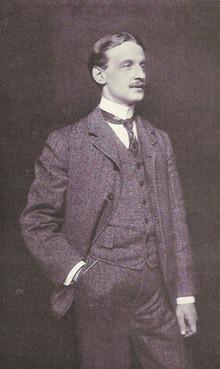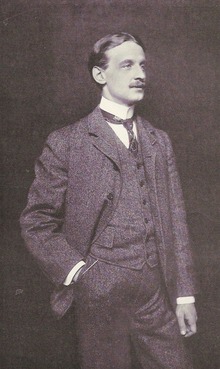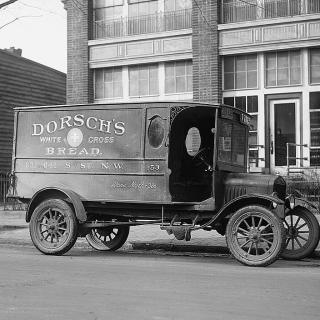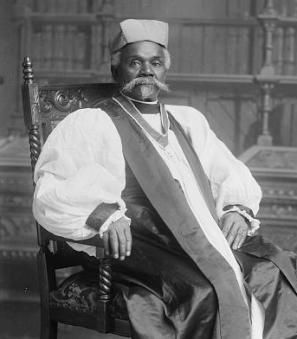Henry Shrady: The Man Who Gave His Life for U.S. Grant’s Memorial
The Ulysses S. Grant Memorial, situated in Union Square in front of the U.S. Capitol, is one of the most magnificent memorials in Washington, D.C., if not the whole country. A monument not just to Grant, but to all those who fought in the Civil War, it spreads out on a 252-foot by 71-foot marble platform.
There are three separate sculptures that make up the monument. To the far left is the Calvary Charge, a dramatic representation of soldiers on horseback moving into battle under withering fire. To the far left is Artillery, a depiction of men moving a cannon into position. In the center is the 17-foot high statue of Grant, sitting astride his horse Cincinnati and overlooking the battlefield with a steady gaze. At the base of the 22.5-foot marble pedestal that Grant rests on are four lions to protect the flags of the Army and the United States. The 10,000-pound Grant statue is two and a half times human size, and it was, until 2007, the largest equestrian statue in the United States.[1] It remains one of the four largest such statues in the world.
When sculptor Henry Merwin Shrady, along with architect Edward Pearce Casey, won the commission to design the Grant Memorial in 1902, neither man was quite aware of the scope of the project with which they were getting involved. The monument had first been proposed in 1895 by the Society of the Army of the Tennessee, which wanted a grand way to honor the general who led the Union Army to victory during the Civil War.
Grant, who had died in 1885, had received scant recognition for his service to the country beyond the commercial and critical success that followed the posthumous publication of his memoirs.[2] In 1901, Congress heeded the call of the Society and authorized $250,000 for a memorial to the late president and general. The call for designs drew 27 submissions from 23 different artists, but the model proposed by Shrady and Casey was chosen in 1902.
Shrady, born in 1871 in New York City, had briefly pursued a career in law before turning to sculpture. He was self-taught and soon showed a talent for producing large reproductions of animals. He was in the midst of an equestrian portrait of George Washington to be placed on the Williamsburg Bridge when he received the call to begin work with Casey on the Grant Memorial.[3]
Shrady dove into the work with unmatched zeal. He joined the National Guard and spent four years learning military practice. He tracked down and obtained Union equipment and gear and studied volumes of books and paintings of the Civil War, absorbing every detail so he could accurately portray the spirit of Grant and the men who would be honored in the monument.
While Casey worked on the design of the memorial, Shrady immersed himself in the sculptures. He was criticized on several occasions for the slow pace of his work, but the richness of detail in the faces and uniforms of the men and the animals in the statues and bronze reliefs proves that Shrady’s time was not wasted. He even used his own likeness when sculpting one of the soldiers in the Cavalry Charge, forever memorializing himself in this magnificent work.
Shrady’s sculptures were critically acclaimed by art critics and the public. As historian James M. Goode wrote, they "...possess more dramatic interest and suspense than any sculpture in the city and, indeed, in the Nation.”[4]
Shrady worked on the Grant memorial for 20 years. His frantic pace toward the end of the project led to sleepless nights, illness, and his death just two weeks before the memorial was publicly unveiled on the 100th anniversary of Grant’s birth, April 27, 1922.
The memorial that Shrady and Casey built is a fitting tribute to Ulysses S. Grant, a man who assumed a command he was not prepared for, but ultimately rose to the challenge and helped save the Union through his military skill, courage, and perseverance. The memorial to Grant, which sits at the opposite end of the mall and faces the Lincoln Memorial, is also something of a memorial to Shrady, who remained dedicated to his work, like Grant, to the day he died.
Footnotes
- ^ In 2007, a controversial statue honoring conquistador Juan de Oñate, was erected in El Paso, Texas, standing 36 feet tall and weighing 18 tons. http://thehillishome.com/2013/07/lost-capitol-hill-the-tallest-equestri…
- ^ Grant finished his memoirs mere weeks before succumbing to throat cancer. The book, Personal Memoirs of Ulysses S. Grant, has been widely praised as a literary masterpiece. http://www.granthomepage.com/grantlaststand.htm
- ^ Ulysses S. Grant Memorial, Architect of the Capitol website, http://www.aoc.gov/capitol-grounds/ulysses-s-grant-memorial
- ^ Goode, James M., The Outdoor Sculpture of Washington, D.C.: A Comprehensive Historical Guide. Smithsonian International Press, 1974, p. 246.





![Sketch of the mythical fuan by Pearson Scott Foresman. [Source: Wikipedia]](/sites/default/files/styles/crop_320x320/public/2023-10/Goatman_Wikipedia_Faun_2_%28PSF%29.png?h=64a074ff&itok=C9Qh-PE1)












